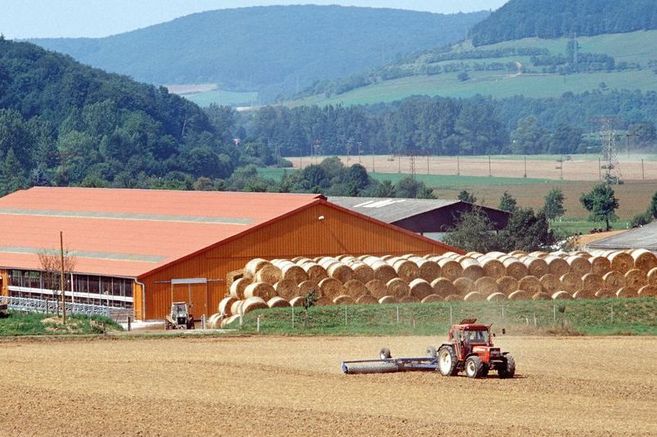Joint press release of Thünen Institute, Humboldt University Berlin and ZALF
Researchers at the Thünen Institute, Humboldt-Universität zu Berlin and the Leibniz Centre for Agricultural Landscape Research (ZALF) have used satellite data to create detailed Germany-wide maps of agricultural land use over several years for the first time.
For many environmental and agricultural policy issues, it would be good to know which crop types are grown on which agricultural land in which year. So far, however, there are only statis-tics on land use in Germany, which provide relatively rough and time-delayed information. Weekly satellite acquisitions can remedy this situation and serve as a data basis for a land-use map with a high degree of accuracy. Researchers from the Thünen Institute, the Humboldt-Universität zu Berlin and the Leibniz Centre for Agricultural Landscape Research (ZALF) e.V. have combined their expertise to produce maps of agricultural land use for 2017, 2018 and 2019 from remote sensing data for the first time.
To create the maps, the scientists used machine learning methods, available information on farmers' previous land use and data from the U.S. Landsat 8 satellite mission and the Copernicus program of the European Space Agency (ESA), whose satellites have been orbiting the Earth since 2016. In order to take into account regional characteristics as well as seasonal and annual fluctuations, weather data from the German Weather Service as well as the Germany-wide elevation model and the Digital Landscape Model of the Federal Agency for Cartography and Geodesy (BKG) were further included.
Crop types and landscape elements mapped on a small scale
The maps distinguish the dominant crop types and main land uses in arable land, i.e. all main cereals, root crops, vegetables, permanent crops and legumes. In addition, relevant landscape elements in the agricultural landscape, such as woody structures, are also recorded. Thus, for the first time, Germany's agricultural landscape is mapped on a 10 m x 10 m grid.
"Although the maps already show a high degree of accuracy, there is still a need for further re-search," emphasizes Prof. Dr. Patrick Hostert from Humboldt-Universität zu Berlin. For example, crop species such as rapeseed or sugar beet can be differentiated very well. On the other hand, species that are very similar in the course of their growth phases or in their appearance (e.g. winter wheat and triticale) or that differ only in terms of their type of use (e.g. silage maize and grain maize) cannot yet be mapped with sufficient accuracy.
The consortium also sees a need for further research on special locations, for example in regularly flooded areas. Regardless, the maps are a milestone in the development of area-wide information on agricultural use. Building on this cooperation, the Thünen Institute plans to continuously improve the maps and to produce them on an annual basis.
"The fact that these maps are not an end in themselves is shown by the wide range of applica-tions for other ongoing projects," says Dr. Stefan Erasmi, head of Thünen Earth Observation (ThEO). In addition to supplementing and refining agricultural statistics, they provide a basis for monitoring activities at the national level, for example, in assessing biodiversity, EU Common Agricultural Policy (CAP) measures, and land use change as a factor in greenhouse gas reporting. "The maps are also essential input parameters for simulations of agricultural yields and ecosystem services," explains Prof. Dr. Claas Nendel of ZALF.
All in all, this means that a comprehensive set of maps is available for politicians, authorities, organizations and associations, as well as research and education in the field of agriculture and the environment. And the maps also provide interesting insights for those who practice agriculture themselves or would like to discover the diversity of the agricultural landscape in Germany.
A first version of the interactive maps from 2017 to 2019 is available at: https://ows.geo.hu-berlin.de/webviewer/landwirtschaft/









